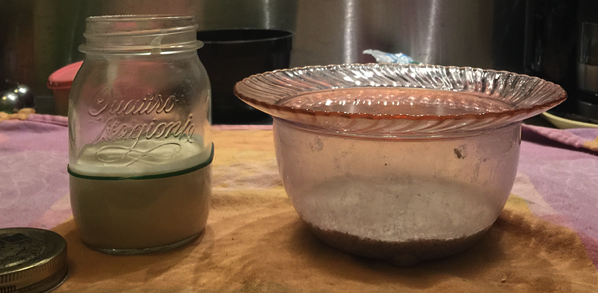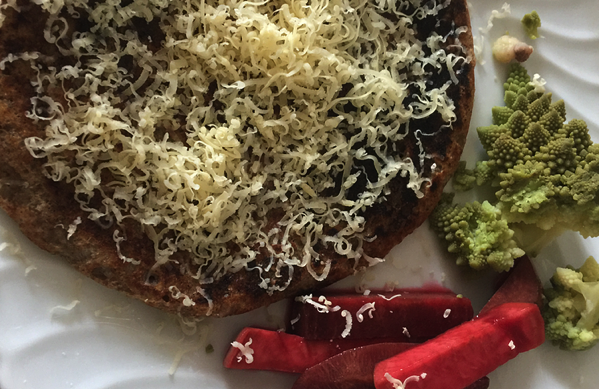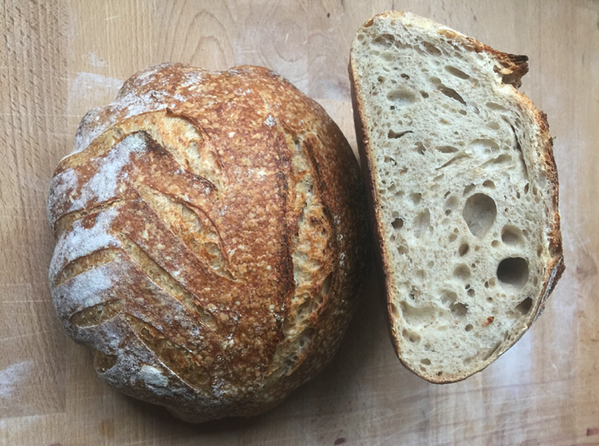To continue the story of #igbreadclub …
A brief recap: each month we bake a loaf from Hamelman’s Bread and share our experience. Although this is filed under Recipes I’m not actually giving detailed quantities or method because I followed the original pretty closely and so don’t feel it is fair. The only difference is that instead of ordinary wholewheat flour I used whole farro flour, which scarcely warrants comment.
The recipe calls for two different starters. I decided to get to the stiff rye starter in two steps, and began on Sunday evening. It is so cold in the house at the moment that I wasn’t entirely surprised that there was almost no sign of movement 24 hours later, but when I opened the starter with a spoon to start the next build, the structure was in fact much lighter and quite well aerated. So I made a second build of stiff rye starter and at the same time built the required amount of liquid white starter, based on my 100% hydration white starter.

The reward for my patience and the rye two-step was a fine rye pancake for lunch.

On Tuesday evening the liquid starter was bubbling nicely and the rye starter had domed up a bit. Time to mix it up. Hamelman calls for an hour-long autolyse without salt, which was fine except for one thing; I forgot to add the salt and didn’t notice until after I had finished kneading. No problem; I added the salt, gave a couple of additional folds and left the dough while we ate supper and watched a show.
For the second set of folds, though, instead of just doing it in the bowl, I lightly oiled the counter, tipped out the dough and did 20 quick kneads. I’m glad I did, because the salt was not very evenly dispersed the first time.
Because it was so cold 1 I just left the dough covered on the counter overnight for a bulk ferment of about 11 hours. Next morning I divided the dough, shaped the loaves and put them in their baskets for a seven-hour proofing.
They were baked in a Dutch oven at maximum temperature for 21 minutes with the lid on and 21 minutes with the lid off. The second loaf (on the left in the picture below) got an extra five minutes outside the Dutch oven.

I was pleasantly surprised by the very good oven spring. And then, a few hours later, by the taste of the bread. I’m not sure I have the equipment to give a very detailed description, but it does seem to be a bit more complex than my normal white sourdough. Now that could be down to the two starters or it could be simply the fact that the dough contains a bit of rye and a bit of wholemeal. I suppose that the best way to find out would be to make the same basic recipe with just one liquid white starter and a bit of added rye and compare that to the two-starter version but frankly, life is too short.
Would I make it again? Probably not, unless I happened to have some rye sourdough starter going begging. But if I do have spare rye sourdough starter it is more likely to end up in a pancake than in this bread.
I’m really excited by #igbreadclub because it will give me a reason to try different things and even if they don’t end up in my permanent repertoire it’ll be fun and I know I will improve as a baker. And I’ll report on them here.
- I measured the kitchen temperature at 14°C before bedtime and 12°C the next morning. ↩